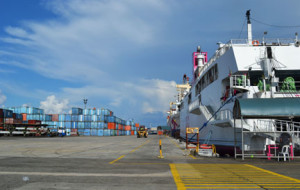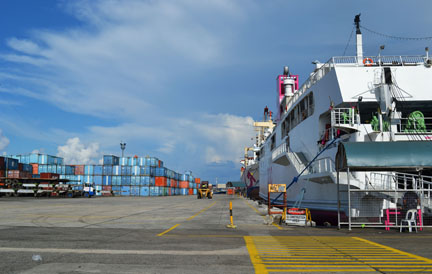
Philippine shipping lines may not be forthcoming with operational numbers – which to all but a couple of listed companies seem to be closely guarded secrets – but they are one in saying their performance in the first half of 2013 has so far been satisfactory.
And with the second half of the year barely at hand, the liner operators are already forecasting a stronger half-year in terms of volume and revenues, never mind the price war that the industry itself admits, new players coming in and expanding capacities.
The rationale is undeniably strong domestic volumes.
“Yes, we expect better volumes and carriages in the next half of 2013,” said one industry executive when asked for a forecast for the shipping industry’s prospects in the second half of the year.
The official, who spoke on condition of anonymity, said trade volumes are expected to improve as a result of the country recently gaining an investment-grade rating from Fitch and Standard & Poor’s.
The Philippine Liner Shipping Association said a survey conducted among members showed generally satisfactory performance in the first half of 2013. But when pressed for data on actual liftings, revenues, and earnings for the first half, an official contacted by PortCalls said such data is not monitored.
Publicly-listed 2GO Group Inc. aptly reflects the industry sentiment. The shipping line paints a rosy picture for this year after swinging to a P59.4 million net profit in the first quarter from a net loss of P213.2 million in the comparable period in 2012.
2GO sees 2013 as a banner year, as the country’s largest logistics service operator expects its integration and consolidation efforts with Negros Navigation to bear fruit.
“The company has been successful in finding and implementing the correct formulas to dominate the market in the industries they are in,” 2GO told the Philippine Stock Exchange.
Its president and CEO Sulficio Tagud Jr. said in earlier reports the group produced pre-tax earnings of P80 million in January-February this year. That, he said, showed 2GO’s freight and passage as well as its logistics unit are on track to hit their targets, as shipping and supply chain improvements are now in place to better serve the growing domestic economy.
“This year, we are projecting P600 million to P700 million net income, on the back of P18 billion revenues,” Tagud said. This will be boosted by a broader client base and the overall growth in the economy.
In 2011, the first year of union between Aboitiz Transport System (ATS) and Negros Navigation Co. Inc. from which emerged 2GO, the shipping line posted a net loss of P1.4 billion.
It was a different story for Lorenzo Shipping Corp., another listed container liner. LSC reported a 55.4% year-on-year plunge in net income to P7.26 million in the first quarter from P15.92 million as freight revenues dropped significantly.
The company, a pure cargo liner, said in this industry there are constant fluctuations in cargo volumes arising from competition and changes in the market environment. These negative trends in cargo volumes and freight rates have hurt its performance.
Net income for the quarter was P8.67 million lower than in the same period last year as January- March freight revenues declined 12.4% to P398.79 million.
For unlisted Gothong Southern, a Cebu-based liner, port, and logistics company, its optimism for a better year after a good one in 2012 was shaken in the first quarter, when revenues slipped amid capacity expansion by rival shipping lines and new operators entering the sector.
“Although (our) volume may have increased, capacity also grew. Such growth in volume has not really resulted in excess demand in our company, because many shipping lines are emerging,” said Rex Yuvienco, the Manila-based vice president of Gothong Southern.
The nine-member PLSA admits overcapacity is a problem in the domestic shipping industry that puts pressure on freight rates. Prices nevertheless are now at higher levels compared with 2010, when the global economic slowdown that began in the West began to weigh on demand, the association said.
“There is overtonnage in the domestic shipping operations, resulting in ‘more supply than demand’ = stiff competition = low freight rates. With the very volatile movement of bunker fuel prices, profitability of shipping lines suffers,” a PLSA official said.
“There is a price war among domestic liners. PLSA members, depending on the link/route and volume, are forced to ‘compete’ to the point of matching freight rates offered by competitors.”
Other nagging concerns the association is dealing with are “fly-by-night” freight forwarders and local/domestic consolidators. There had been a move to accredit them, but this was aborted.
Hanging like a a Damocles’ sword above the shipping lines’ heads is a crane rate fee of P1,900 per lifting proposed by Manila North Harbour Port Inc. to the Philippine Ports Authority.
“The MNHPI’s proposed crane rate for domestic operations at the North Harbor is inflationary,” the PLSA said.
Photo by Roumina Pablo
[copyscape]





